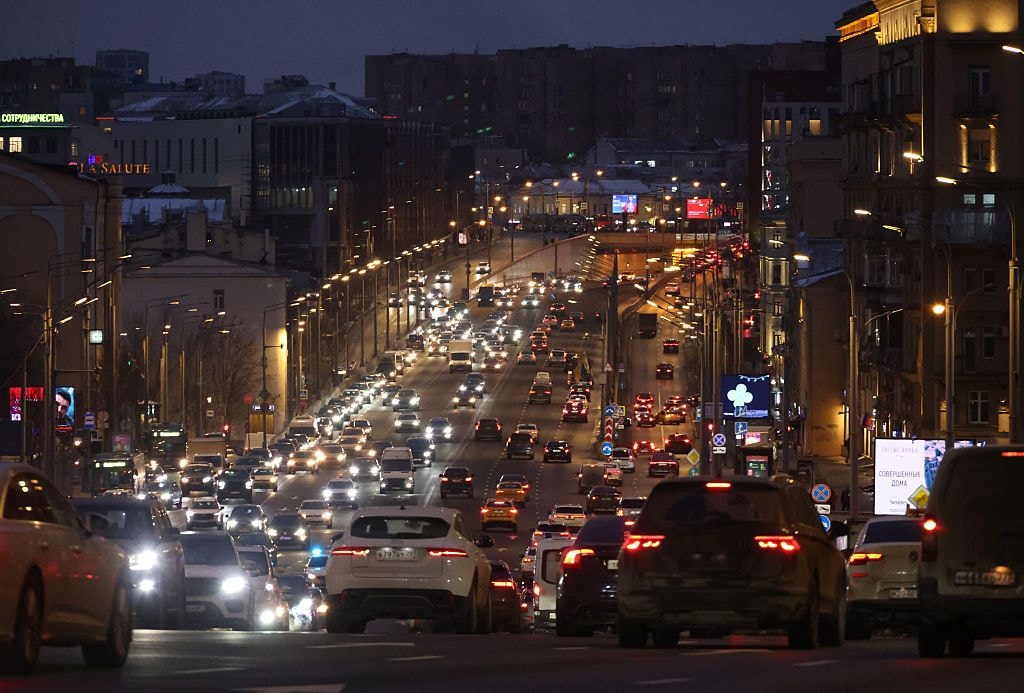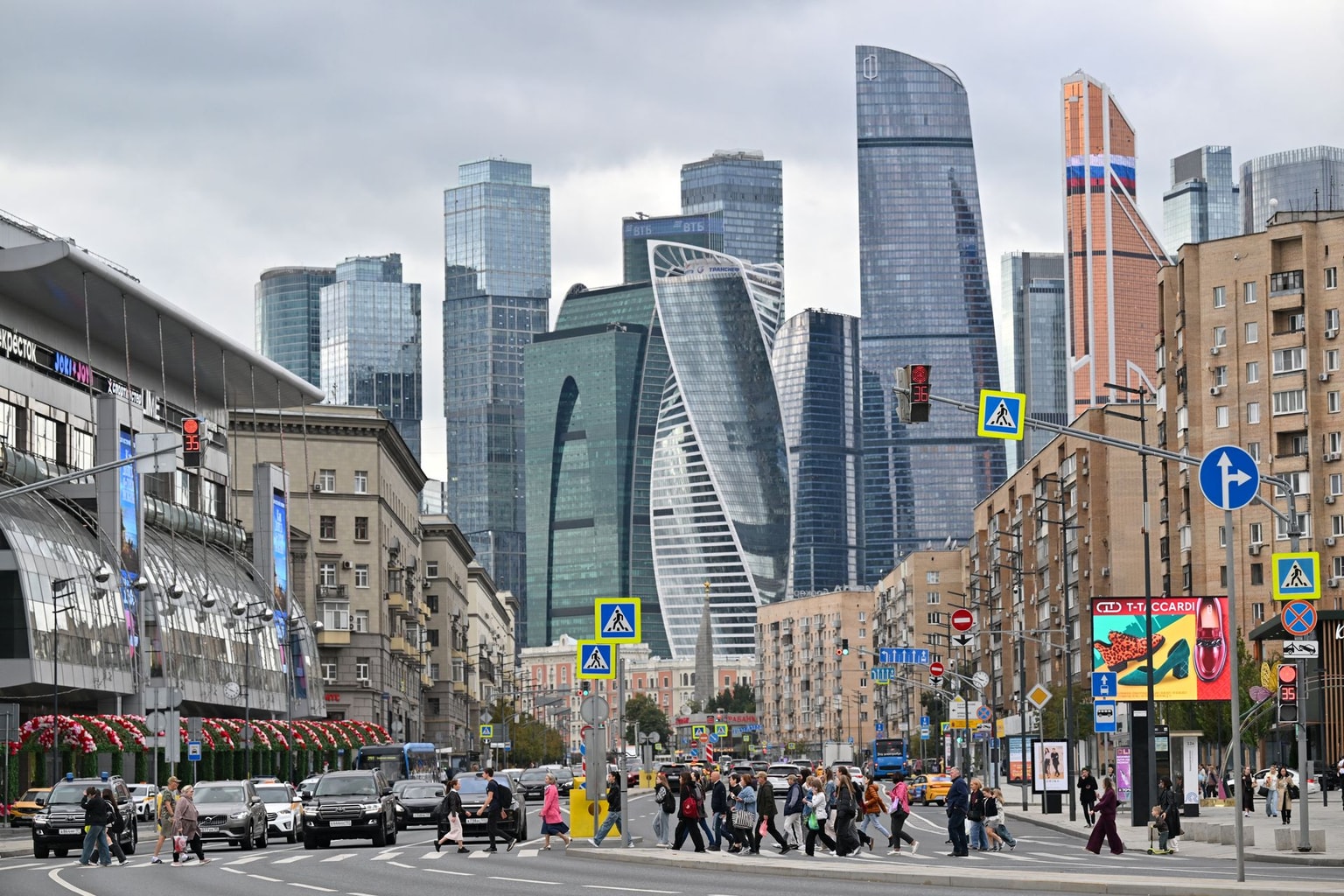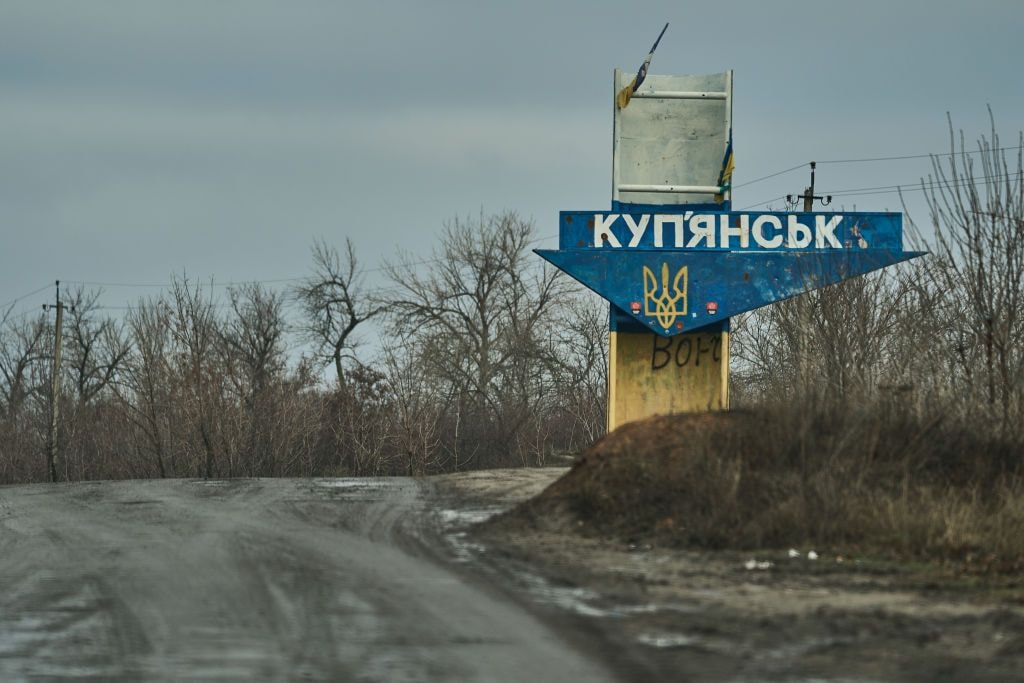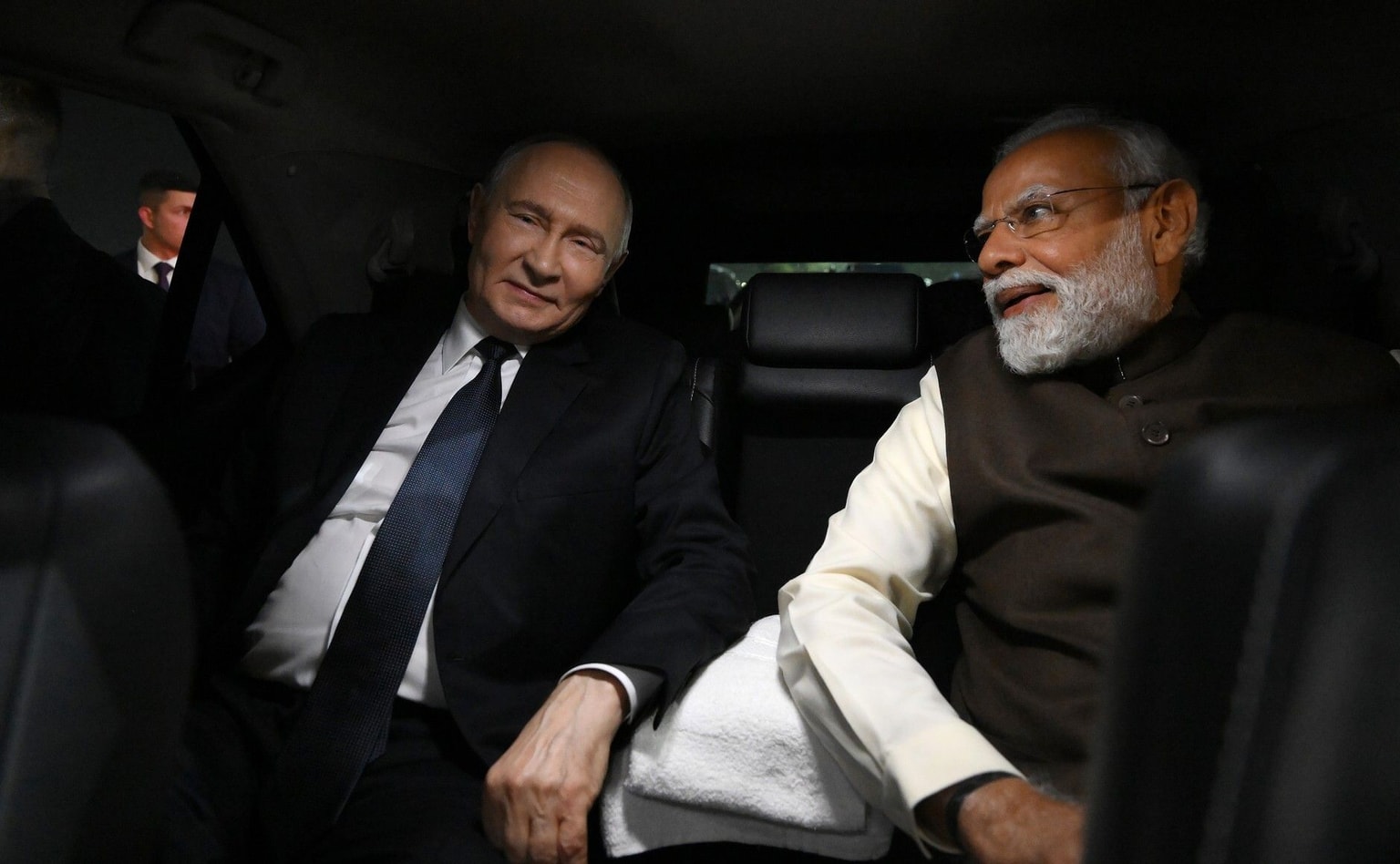
Russia takes Avdiivka at steep price, as Ukraine forced to face shortcomings
A general view of smoke rising from the Avdiivka Coke and Chemical Plant behind the village of Lastochkino, which is under fire from MLRS "Grad" on Feb. 15, 2024, in Avdiivka district, Donetsk Oblast. Ukraine officially announced its withdrawal from Avdiivka on Feb. 17, 2024. (Kostiantyn Liberov/Libkos/Getty Images)
The capture of Avdiivka is Russia’s first major achievement in nine months, but it doesn’t leave any side looking good.
For Russia, it was a Pyrrhic victory that consumed an army’s worth of equipment and killed or mangled estimated tens of thousands of Russian men to capture a city with marginal strategic importance. Avdiivka is valuable mostly as a set piece for Vladimir Putin’s victory propaganda ahead of the upcoming presidential elections. This means that the four-month operation with the likely five-figure body count was propelled mostly by political goals.
However, Ukraine revealed problems of its own. It failed to fortify critical fighting positions in time. The 110th Motorized Brigade defending Avdiivka wasn’t sent the reinforcements that it needed. And when retreat became inevitable, it was delayed for unknown reasons. All mistakes when facing an enemy that has overwhelming numbers of gliding bombs, drones, artillery, and doctrinally expendable manpower.
This made the retreat costlier in lives and equipment than it needed to be, as the Russians pounced on the opportunity to inflict more damage, experts on the Ukrainian military told the Kyiv Independent. Some retreating Ukrainians were shelled or cut off and killed. The number of casualties on the Ukrainian side is unclear, with different guesses by different sources. Some Western-donated equipment was reportedly left behind as well.
Avdiivka, the Donetsk Oblast town with a pre-war population of 35,000 people, has taunted Russian forces since 2014. It’s the first town of that size that Moscow captured after Bakhmut in the spring of 2023, and the Russian troops paid a very steep price.
Military analyst Michael Kofman said it was worth it for Ukraine to hang on to the city until the battle turned — once it did, choosing to withdraw was the right decision.
However, Russia losing men and materiel doesn’t really matter, because they can afford them and they don’t care, said Glen Grant, a retired U.K. lieutenant colonel who advises Ukraine. “We cannot afford to fight them this way,” he said. “The tactics have to change.”

The culmination of the Battle for Avdiivka exposes the lack of vision in some units and the Ukrainian Armed Forces as a whole. It tracks with the disorganization at the 110th and other units that Ukrainian soldiers described to the Kyiv Independent in recent months.
Elements of the 3rd Assault Brigade have been sent into Avdiivka to support the withdrawal of soldiers and civilians at only two battalions’ strength as the tide of multiple veteran Russian brigades swamps the city. They claimed to have destroyed two Russian brigades.
Forced out
Oleksandr Syrskyi, the newly appointed commander-in-chief of Ukraine’s Armed Forces, officially announced the decision to withdraw at 2 a.m. on Feb. 17.
Ivan Sekach, the press officer of the 110th Brigade, told the Kyiv Independent that all of the brigade’s units are now out of Avdiivka.
This agrees with the findings of Pasi Paroinen, one of the open-source monitors at the Black Bird Group. He said the last evacuations happened overnight, into the morning of Feb. 17, though there could still be pockets of isolated troops or civilians in the city. Russian forces are now hoisting flags over positions that were held by Ukrainian units on Feb. 16.
Sekach said that the retreat was done “at a good level” of execution considering the Russians tried their best to hit them with artillery for maximum damage. The units followed exit paths planned in advance with drone escort.
“The (Russians) squeezed us out of Avdiivka with thousands of tons of meat and bombs,” he said. “To preserve our personnel, a decision was made to retreat from Avdiivka.” He wasn’t able to comment about any evacuation delays, saying he is not privy to decisions at the top level and that every military plan tends to change quickly.
Grant had a more blunt assessment: “Ukraine didn’t retreat, they were forced out. The 110th Brigade has been decimated.”
Brutal withdrawal
Unlike earlier battles of the full-scale war, where Russia struck ineffectually in many places at once, this time they brought their firepower to bear on one target, said Ivan Stupak, a military analyst formerly affiliated with the Security Service of Ukraine (SBU).
After taking huge losses trying to capture Avdiivka’s flanks, but also grinding down the defenders, the Russians focused on the city.
“Russian forces have been grinding away at the Avdiivka pocket since the initial assaults in October,” Kofman said. “By February it was clear that Avdiivka’s fall was near inevitable, and that Ukraine’s Armed Forces should begin withdrawing.”
Airstrikes with gliding bombs were especially impactful in making Ukraine’s positions indefensible. They leveled fortifications and caused blast trauma dozens of meters away. What they lacked in accuracy, the bombs made up for in numbers, according to Kirill Mikhailov, a researcher with the Conflict Intelligence Group.
Both sides’ accounts of the final days of the battle suggest an unprecedented number of these bombs. Ukraine recently shot down three of the Russian planes and the strikes fell drastically.
“This is where the long-promised F-16 jets would come in handy,” Mikhailov said, explaining that F-16s with AIM-120 missiles can knock down the planes before their bombs come into range.
Withdrawing from east of the town, especially the filtration plant, required Ukrainians to hold positions at the Zenit fortress anchoring Avdiivka’s southern flank. After evacuations started flowing and the Russians realized it, they sent multiple brigades, including tanks, airborne and special forces to rout them. Many retreats were done in small groups.
Depending on where they were in the city, the Ukrainians’ withdrawal ranged from attempted controlled exits and people fleeing for their lives as the Russians blasted them. In retreat videos, Ukrainians escaping in vehicles are being shot by indirect fire or FPV (first-person view) drones. With no safe way to get vehicles inside Avdiivka, it’s hard to tell how many casualties there were.
Two survivors who retreated from the Zenit fortress after it was mostly encircled told the Kyiv Independent that they witnessed many of the fortress’ defenders getting killed during the retreat.
Delayed evacuation?
Fighting withdrawals are some of the most difficult military operations that exist. But experts argued that the defenders should have been long gone.
“From what we can gather it seems that the evacuation was done very late,” Paroinen said. “The final decision to leave was likely made… around Feb. 15.”
“Although Ukrainian forces withdrew, rather than trying to turn this battle into another Bakhmut, it was still done late and in a costly manner that doesn’t reflect good lessons learned from Sievierodonetsk, Soledar, or Bakhmut,” Kofman said.
“You do not leave yourself fighting on three sides” without enough forces to push back on two of them, Grant said. “When it became clear the front was going to be overwhelmed, we should have worked out how to do a fighting withdrawal three weeks ago, inflicting maximum casualties as we went. All we’ve done is lost lots of people for no military gain.”
Besides its supply deficiency, the Ukrainian side is hampered by political interference and poor command and control, multiple experts told the Kyiv Independent.
Russia is not the only country going through an election year. Whether or not Ukraine will hold elections, political planners have enough influence over military strategy for it to be a problem, observers said.
Stupak thinks the recent replacement of General Valerii Zaluzhnyi, former commander-in-chief, with Syrskyi probably has a lot to do with politics.
“Syrskyi is more office-oriented and less problematic,” Stupak said. “If you tell him to do something, he’ll do it.” Zaluzhnyi was more willing to push back and speak his mind.
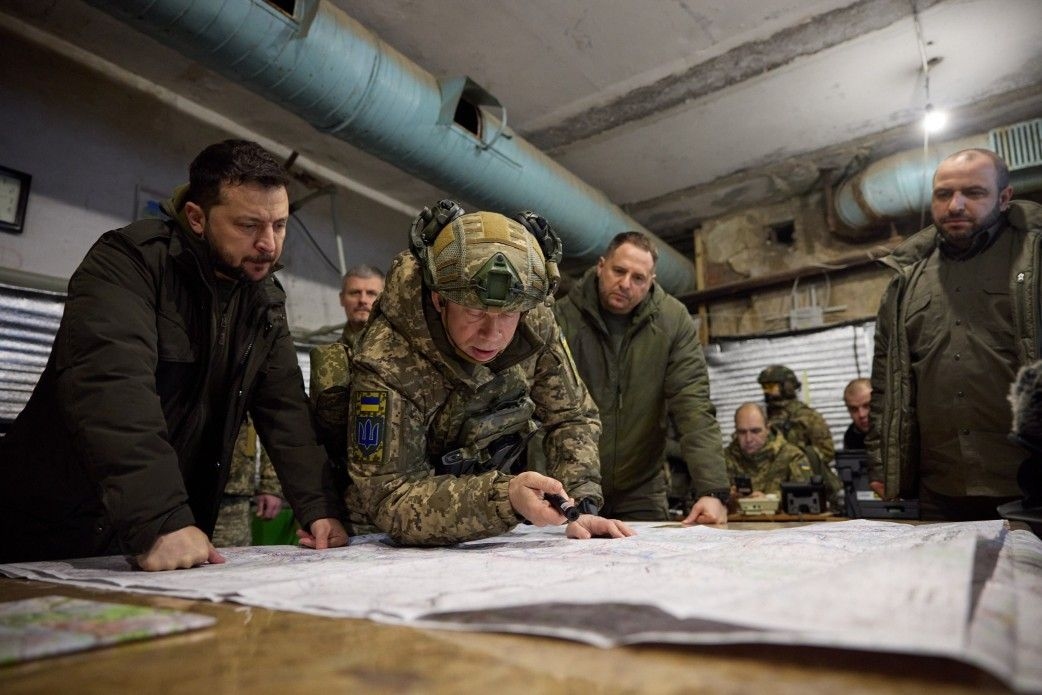
“I think Avdiivka had elements of Bakhmut, ‘we will hold this fortress mentality,’” Stupak added. “Some part of that logic was there.”
Kofman agreed that a "hold at all costs mentality" of political leadership isn’t helping. Ukraine must be smarter about how it fights in 2024, he said.
Shortcomings
The retreat wasn’t the only thing that was delayed. Analysts and familiar sources speaking on condition of anonymity said that multiple military decisions on the Avdiivka front were delayed as well.
The Kyiv Independent interviewed sources in the military or their family members, including in the 110th. Names have been omitted to protect sources from retaliation.
Some of the fighting positions near Avdiivka had gone unreinforced for many years, and were inadequate to repel a Russian attack, according to soldier testimonials to multiple Kyiv Independent reporters, backed by expert opinion. This is ironic, as some have predicted that Avdiivka would be a tough nut to crack due to a decade of continuous reinforcement.

“To be honest, we have been looking at Avdiivka for some time wondering where this idea of it being ‘one of the most heavily fortified towns’ comes from,” Paroinen said.
“Ukrainian fortifications were in most places built during the 2014-2022 pre-invasion period. And like in many other areas of the front, Ukrainian forces have done much less preparation in depth when compared to the Russians.”
In the mobilized soldier’s description, commanders from other brigades sometimes visited his positions, saw how bad they were, and openly refused to send their men there to die. By the time the brigade decided to fortify these positions, they were under such heavy fire, it was impossible to begin.
Press officer Sekach said that the front line was changing too quickly to meaningfully fortify any positions, which would imply that efforts were being made when Russians were at the door.

Fire support was another problem — when the Ukrainian infantry needed it, it rarely materialized. This is the same thing that Ukrainian soldiers fighting in Bakhmut had told the Kyiv Independent in February 2023.
According to one soldier who fought on the Avdiivka front, he once had a clear visual on a Russian truck packed with munitions next to the Russian positions. No matter how many times the Ukrainians tried to call in a strike on it, none ever came — the munitions were distributed to the enemy and used on the defenders.
One factor was the dearth of ammunition, spent during Ukraine's summer offensive, and the procurement system still has problems. The EU has yet to sufficiently ramp up its ammo production and meet earlier promises while in Washington, right-wing opposition to funding Ukraine continues to drag out the country's ammunition timetable with a question mark. Russians also enjoyed the protection and easy supply of the Donetsk-adjacent area.
The issue goes beyond fire support. Experts said that Ukraine conducted a lot fewer counterattacks than it needed to win the fight against its more numerous, better-equipped foe that doesn’t value the lives of its men.
“Ukraine cannot just defend everywhere,” Grant said. “It has to counterattack and push forward. You can’t degrade Russia.”

The 110th is largely staffed by reservists whose training and headquarters interaction is not always to the level of professional soldiers. To their credit, they have been very scrappy and fended off multiple professional Russian brigades on Donetsk’s doorstep since they were deployed there in March 2022.
Experts and sources didn’t just single out one unit, saying that poor leadership and the conditions that give rise to it exist in some units in different parts of the country. Experts said that Ukraine’s new Defense Ministry and military leadership should immediately tackle these kinds of shortcomings.
“What happened in Avdiivka crystallizes the issues in the Ukrainian military that Syrskyi will need to address this year,” Kofman said.
Asami Terajima contributed reporting from Donetsk Oblast.
Note from the author:
Hi, this is Igor Kossov, I hope you enjoyed reading our article.
I consider it a privilege to keep you informed about one of this century's greatest tragedies, Russia's ongoing invasion of Ukraine. With the help of my colleagues, I will continue to bring you in-depth insights into Ukraine's war effort, its international impacts, and the economic, social, and human cost of this war. But I cannot do it without your help. To support independent Ukrainian journalists, please consider becoming our patron. Thank you very much.











